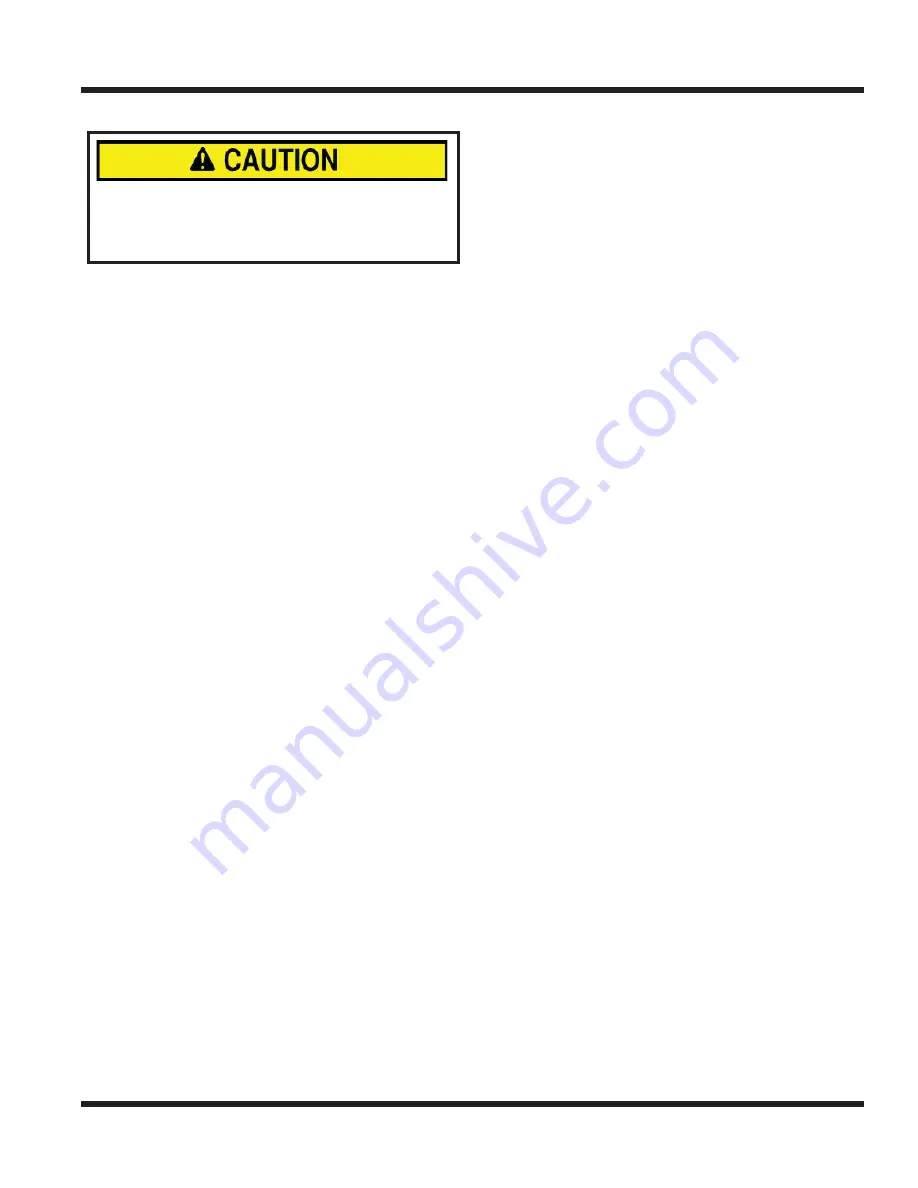
OPERATIONAL CONTROLS
Operation - 21
H
IGH
/L
OW
R
ANGE
S
HIFT
H
ANDLE
(T)
Never shift while under load, while moving, or
while on a slope. Always ensure the shift handle
is secured in the lock position at the end of each
shift stroke.
The high/low range shift handle shifts both the front
and rear transaxles simultaneously. With the power
unit parked on level ground, push the shift handle
forward to select low range. Pull the shift handle
back to select high range. Ensure the shift handle is
secured in the lock position at the end of each shift
stroke.
W
EIGHT
T
RANSFER
(U)
The weight transfer system allows the operator to
select the amount of weight transferred from the front
mounted attachment to the front drive wheels of the
power unit. Transferring weight from the attachment
to the power unit improves traction & hillside stabil-
ity, aids in lifting, reduces steering effort, and lessens
the attachment resistance when in contact with the
ground. Note: The weight transfer system is only ac-
tive while the primary S.D.L.A. is in the
fl
oat position.
The weight transfer chains determine the amount
of weight being transferred from the attachment to
the front wheels of the power unit. If no chain links
are outside the weight transfer plate, no weight will
be transferred from the attachment. The more chain
links outside the weight transfer plate, the more
weight will be transferred from the attachment.
F
UEL
S
HUT
-
OFF
V
ALVE
(V)
The fuel shut-off valve controls the
fl
ow of fuel to the
power unit engine. It can be turned off to prevent
fuel leakage when changing fuel
fi
lters or servicing
fuel system.
F
UEL
P
RIMER
B
ULB
P
UMP
(W)
The fuel primer bulb pump is used to prime the fuel
system on diesel models if there has been an inter-
ruption in the fuel
fl
ow to the engine.
S.D.L.A. L
EVER
(X & Y)
(Speed, Direction, Lift, and Auxiliary Control Levers)
The S.D.L.A. is the primary control for the power
unit and consists of two parts: The primary lever (X)
controls the Speed, Direction of power unit & Lift of
the hitch arms. The secondary lever (Y) controls the
Auxiliary hydraulic circuit.
S
– Speed: The amount of forward or backward
movement of this lever controls the ground speed of
the power unit.
D
- Direction: The forward or backward movement of
the lever controls the direction of the power unit.
L
– Lift: The lift function of the lever has four posi-
tions: Up, Hold, Down, and Float Lock. “Hold” is the
default position; this holds the lift arms from moving
up or down. Pulling the lever to the left raises the
hitch arms. Pushing the lever to the right lowers the
hitch arms. Float position is attained by pushing the
lever to the right until the
fl
oat detent locks the lever
in place.
A
- Auxiliary: The left or right movement of the sec-
ondary lever controls the functions of attachments
that require the auxiliary hydraulic circuit. An op-
tional
fl
oat kit (part # 23.0111-7) is available for the
auxiliary circuit.
F
OOT
P
EDAL
(Z)
Optional accessory. The foot pedal works in conjunc-
tion with the S.D.L.A. lever and can be used to con-
trol direction and speed when the operator’s hand is
removed from the S.D.L.A. lever.
12 V
OLT
R
EAR
O
UTLET
& 4-P
IN
S
OCKET
(AA)
Optional accessory. The outlet provides 12 volts of
electrical power for a variety of products such as
cell phones, radios, spot lights, air compressors,
and more. The socket provides electrical power to
rear mounted attachments equipped with electrical
controls. (e.g. ES220 Spreader.)
3 P
OINT
H
ITCH
& R
EAR
A
UXILIARY
C
ONTROL
H
ANDLES
(BB, CC, & DD)
Optional accessory. The left control handle (BB)
raises or lowers the 3 point hitch arms. The middle
control handle (CC) controls the left rear set of hy-
draulic quick couplers. The right control handle (DD)
controls the right rear set of quick couplers.
A
UXILIARY
H
YDRAULIC
Q
UICK
C
OUPLERS
(EE)
The two couplers are a part of the auxiliary hydrau-
lic circuit and are used with an attachment which
requires hydraulics (e.g. to angle a dozer blade or
rotate the discharge on the snow blower).
















































